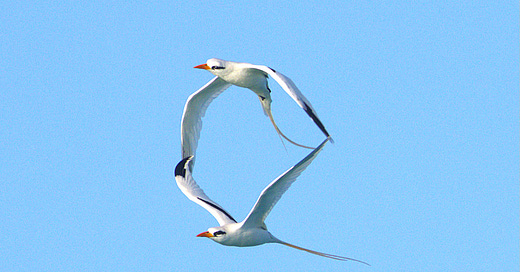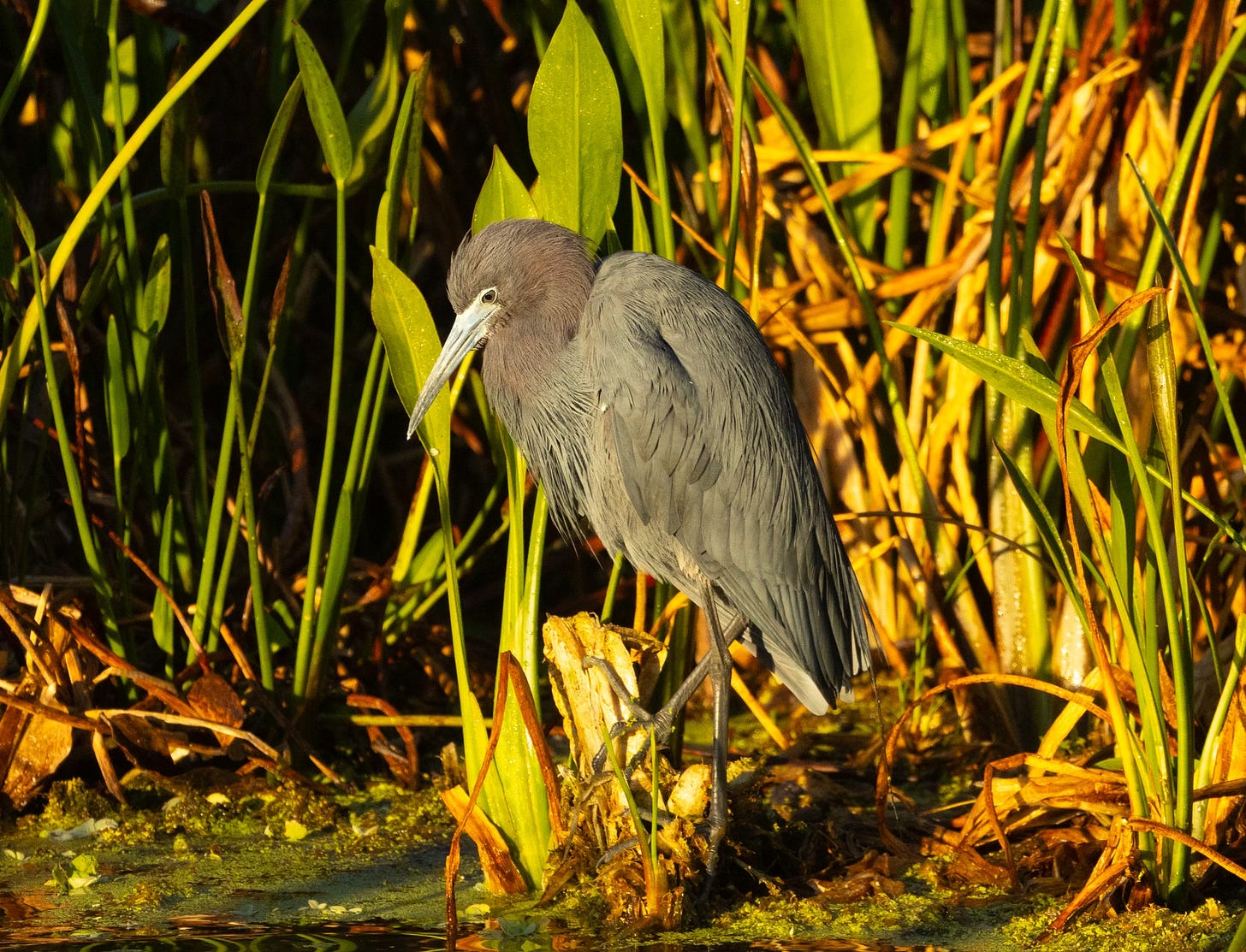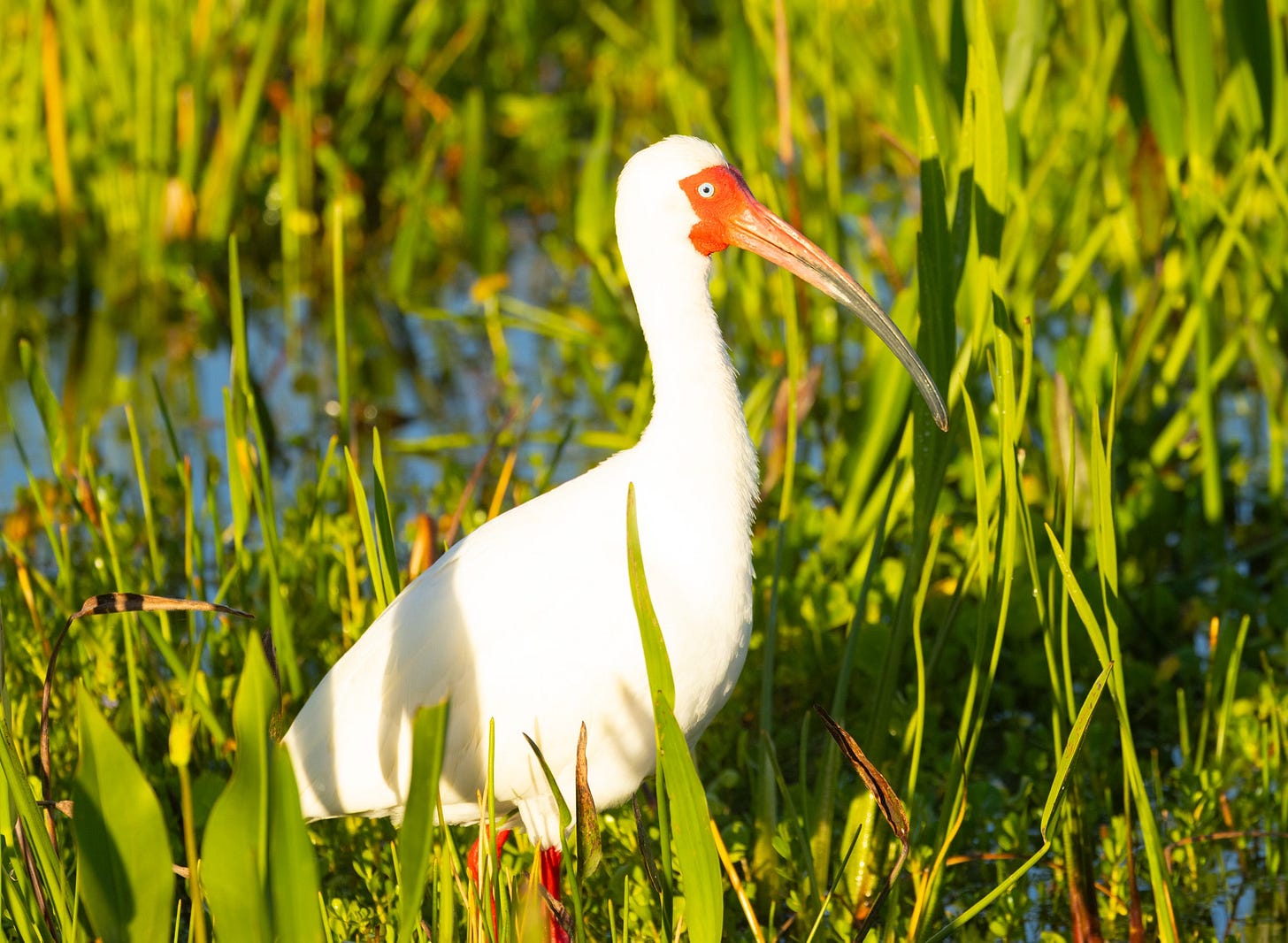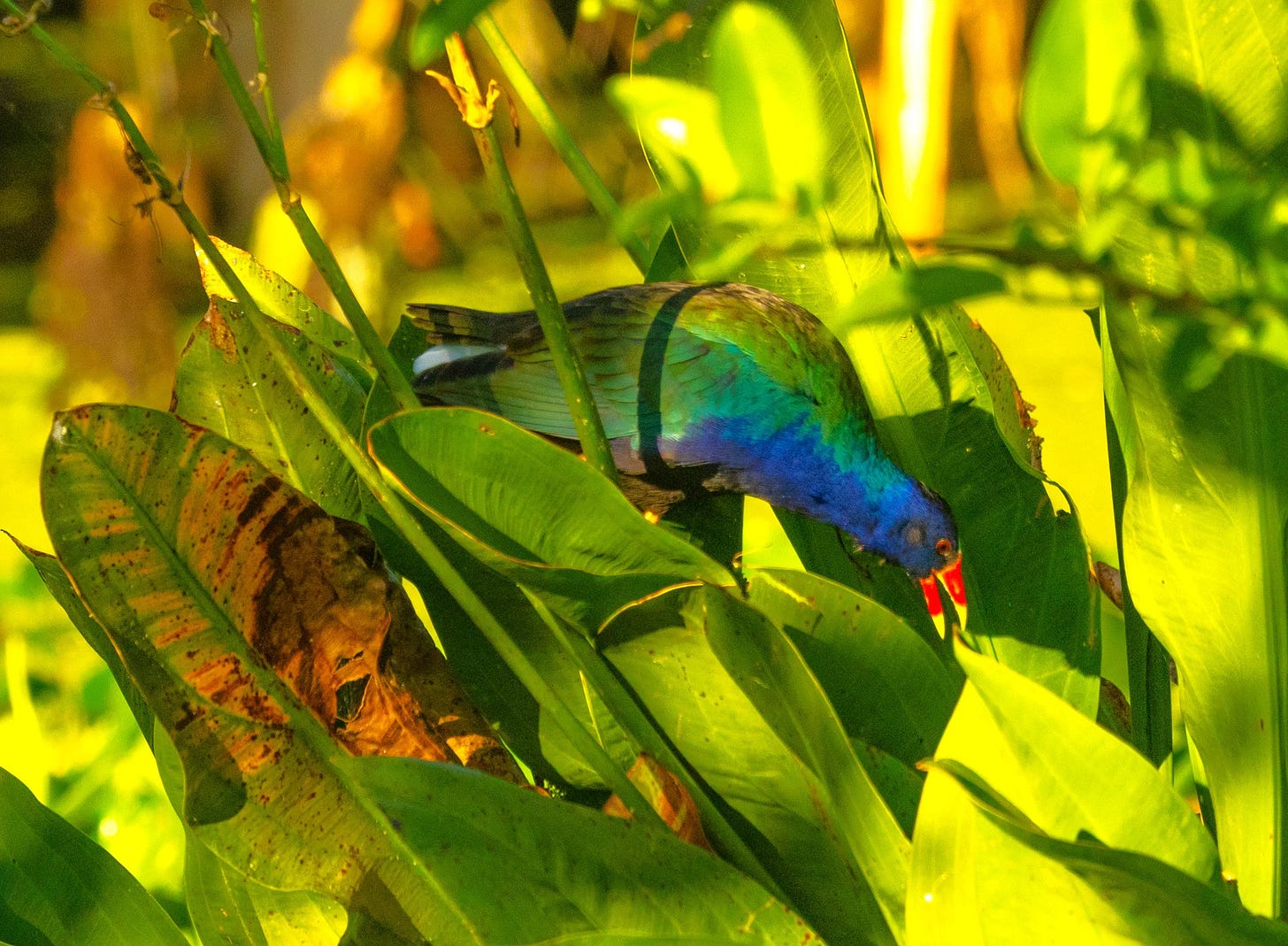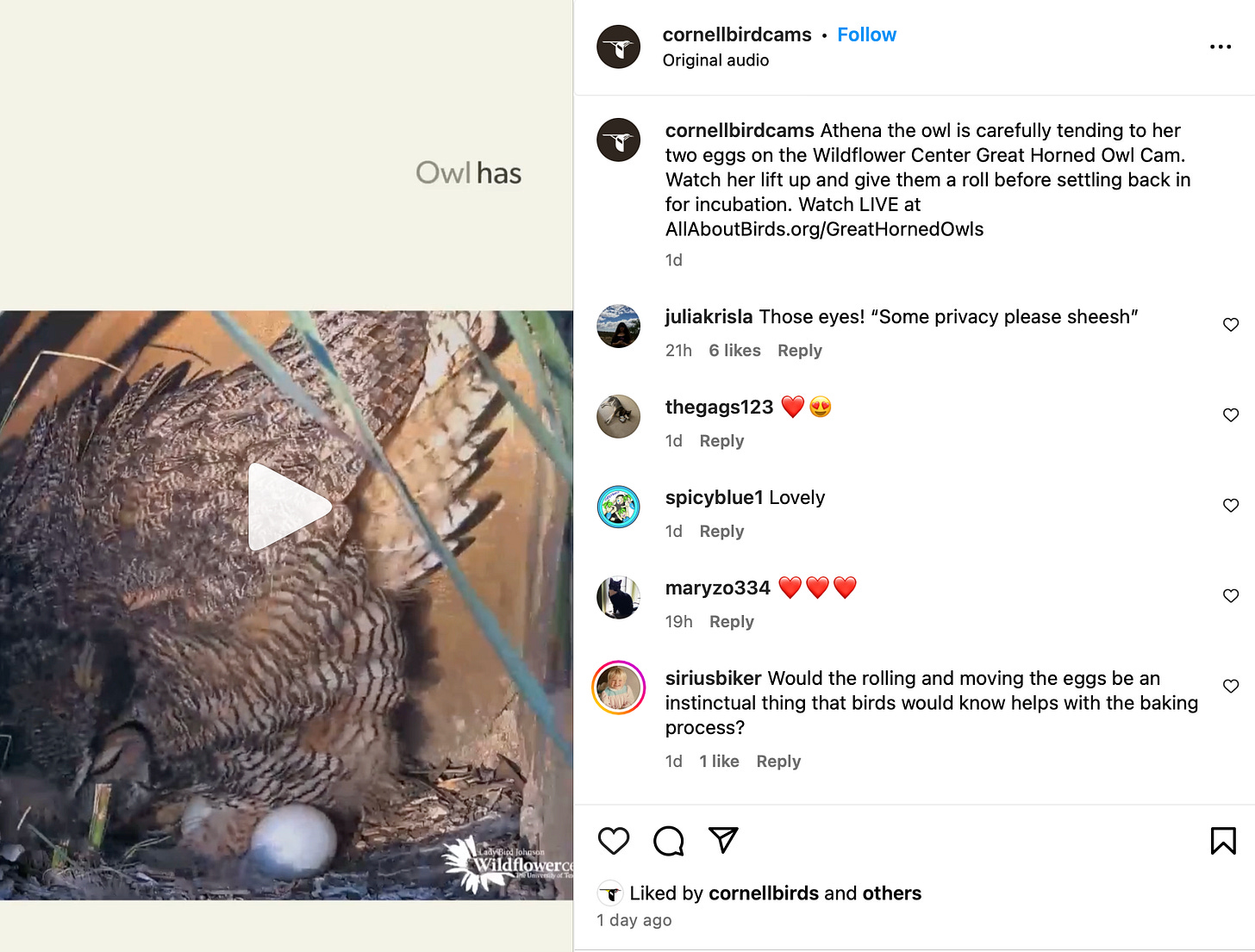*Corrected Version
1. Let's begin with a remarkable Chinese success story - "All the birds returned": It was one of China’s most ambitious environmental endeavours ever. The Loess plateau, an area spanning more than 245,000 sq miles (640,000 sq km) across three provinces and parts of four others, supports about 100 million people. By the end of the 20th century, however, this land, once fertile and productive, was considered the most eroded place on Earth, according to a documentary by the ecologist John D Liu. Generations of farmers had cleared and cultivated the land, slowly breaking down the soil and destroying the cover. Every year, the dust from the plain jammed the Yellow River with silt (this is how the river gets its name), sending plumes of loess, a fine wind-blown sediment, across Chinese cities – including to the capital, Beijing. (via The Guardian)
2. It is that time of the year (finally) - Spring migration has begun: Birds are on the move as their annual spring migration begins. Radar tracking allows you to follow along to see what birds are flying overhead as the birds move to their summer feeding grounds. "The movements are massive," said Andrew Farnsworth, a migration ecologist at Cornell University who works with the university's ornithology lab. "On a big night in the spring, you're talking 450 to 500 million birds flying under cover of darkness.” It's a time of year when local birds that went south for the winter return or birds heading farther north stop to feed. "Right now we're seeing lots of movement in Florida and the Southeastern United States as well as in some midwestern states," Farnsworth said. (via USA Today)
By Hap Ellis, White-tailed Tropicbirds - Shroud Cay, Exuma Islands, Bahamas.
3. "Tipping point" - disturbing updated study: U.S. bird populations are experiencing alarming declines due to factors such as habitat loss and climate change, according to a new report identifying 112 species that have reached a "tipping point," including 42 with perilously low numbers and steep downward trends. Even duck populations, which have been considered a conservation success story, have trended downward in recent years, though they are still higher than 1970 levels, according to the report, released on Thursday by a group of science and conservation organizations. The report looked at 718 species using population data such as the Cornell Lab of Ornithology's eBird Status and Trends project, the U.S. Geological Survey's Breeding Bird Survey and National Audubon Society avian counts. (via Reuters)
4. The power and importance of bioacoustics technology: Scientists have found a new way to track forest birds using thousands of microphones, helping them better protect both wildlife and forests in California's Sierra Nevada mountains. The research, published today in Frontiers in Ecology and the Environment, demonstrates how emerging bioacoustic technology can enhance wildlife monitoring and forest management. Researchers at the Cornell Lab of Ornithology's K. Lisa Yang Center for Conservation Bioacoustics analyzed more than 700,000 hours of bird sounds recorded across California's Sierra Nevada. The team deployed microphones at 1,600 sites spanning approximately 6 M acres of Sierra Nevada forest to track 10 important bird species, including owls and woodpeckers, that can tell us about the forest's health. (via Science Daily)
5. What's up with this Snowy Owl: Bill Diller, a photographer living in Huron County, Mich., had never seen a snowy owl quite like this. In January, Mr. Diller’s neighbor told him about a “red-spotted snowy owl” in the area. It’s a part of Michigan known as “the Thumb,” which becomes home to many snowy owls in the winter. People were calling the bird “Rusty.” “I had never heard of such a thing,” Mr. Diller said, “so I figured either he didn’t know what he was talking about or this was some kind of exotic bird from Asia.” When he soon shared pictures on Facebook of the eye-catchingly orange bird perched atop a utility pole, he helped create a feathered phenomenon. The discovery has perplexed avian experts, too, creating an enduring mystery about what might have made a white bird turn bright orange. (via The New York Times)
6. The Golden State ranks as #2 birding hotspot: As more than a billion birds begin their spring migration across California to their summer breeding grounds in the north, the state's birdwatchers are getting out their binoculars, maps, and other tools of the trade. The Golden State was named the top second destination of all fifty states for birdwatchers by outdoor adventure site KÜHL, which evaluated eight criteria: bird migration counts, species totals, endemic and threatened species, and the number of birding wildlife refuges and national parks. More than 600 bird species have been spotted in California, making up about two-thirds of all bird species in North America, according to the National Audubon Society. (via Yahoo! Life)
By Hap Ellis, Little Blue Heron - Green Cay Nature Center, Boynton Beach, FL.
7. Wait! Roll Tide some say: From the rocky foothills of the Appalachian mountains to the backwaters of the Gulf Coast, Alabama is one of the most interesting states for birdwatching—whether it's a season of migration or not. "The diversity of habitats in Alabama is what makes it such good birding," says Forrest Cortes, ecologist and National Director for Community-Centered Conservation at the Land Trust Alliance. "Different types of places attract different birds, and that's the best way to see different types. You'll tend to notice that different types of birds hang around [each place] differently.” Learn about the different habitats that make Alabama a great state for birdwatching, including how these habitats play a role in global bird migration. (via Southern Living)
8. For our northeast friends: For bird enthusiasts seeking the perfect blend of natural beauty and quaint charm, the Northeast offers a treasure trove of small towns that serve as gateways to some of the most spectacular birdwatching experiences. From coastal hamlets nestled along migratory pathways to mountain villages surrounded by diverse habitats, these destinations invite you to grab your binoculars and immerse yourself in the avian wonders that await. Whether you’re an experienced birder or a curious novice, these towns provide not just an opportunity to spot rare and beautiful species, but also a chance to explore vibrant communities rich in history, culture, and scenic landscapes. (via NewsBreak)
9. Cheating the aging process?: A comprehensive comparative study indicates that certain birds have developed mechanisms to resist the detrimental effects of high blood sugar, offering valuable insights into metabolism and aging. A large-scale study of 88 bird species has found that some birds with high blood sugar levels exhibit resistance to protein glycation, indicating they may have evolved mechanisms to mitigate the harmful effects commonly associated with glucose metabolism. This study represents the first comprehensive comparative analysis of how blood sugar levels, glycation rates, diet, and life history interact in birds. (via SciTechDaily)
10. 12,00 recordings and counting: With more than half of Ireland's birds at risk of extinction, an Irish ornithologist is utilising recordings he has made to advocate for their preservation. Seán Ronayne has approximately 12,000 recordings of Irish birds and other wildlife in his possession. A documentary team have followed his mission as he attempts to capture recordings of every species of bird in Ireland. However, Seán believes "it's not just birds that are at risk of extinction, these are a symptom of something much greater”. Having been immersed in nature from a young age, Seán Ronayne's project didn't begin until he moved to Spain in 2018. (via BBC)
By Hap Ellis, White Ibis - Green Cay Nature Center, Boynton Beach, FL.
11. Lawmakers weigh in on the Northern Spotted Owl plan: A bipartisan group of federal lawmakers is calling on the Trump administration to cancel a controversial plan to kill up to nearly half a million barred owls to protect the vulnerable northern spotted owl. Last year, the U.S. Fish and Wildlife Service approved a plan to shoot the owls in California, Oregon and Washington over three decades. In a March 7 letter to Interior Secretary Doug Burgum, 19 U.S. representatives — including Rep. Sydney Kamlager-Dove (D-Los Angeles) — say the strategy will cost about $1.35 billion to implement. “In the spirit of fiscal responsibility and ethical conservation, we urge you to halt all spending on this plan to mass kill a native, range-expanding North American owl species,” states the letter co-led by Kamlager-Dove and Rep. Troy E. Nehls (R-Texas). (via Los Angeles Times)
12. Notice "...not just the highlights": One out of every three Minnesotans is an active birder, which means we are likely to bump into one another on the trails or parklands. And our first question when we encounter someone with binoculars or a spotting scope is always going to be: See anything unusual? We can’t help it. We’re hardwired to seek the exotic. Kenn Kaufman, in his birding classic “Flights Against the Sunset,” observed that “The search for rare birds is the big thing (even the only thing) for many, and common birds become part of the background, an annoyance to be ignored while one searches for the next rarity.” He call the attitude “contempt for the familiar.” In fact, most birders faintly resent the omnipresent species. House sparrows are practically the definition of common, crows are ubiquitous, pigeons are barely even wild and associated with urban desolation and, of course, with chalky lines of their droppings on every downtown ledge. (via Star Tribune)
13. Angry birds (this from a favorite Maine columnist): Spring migrants are moving north. The first blackbirds have crossed the state line, and flocks of common grackles have appeared in the Bangor area. While we wait for the other migrants to arrive, we can amuse ourselves with the resident local birds that are gearing up for spring. I refer to eagles, crows and ravens. Bald eagles nest early. Crows and ravens aren’t far behind. They may not be on specific territories yet, but they’re thinking about it. Hence, they’re angry with each other. Crows and ravens are members of the corvid family. They are clever and resourceful. They will raid the nests of other birds, including those of their fellow corvids, so they generally don’t trust each other. (via Bangor Daily News)
By Hap Ellis, Purple Gallinule - Wakodahatchee Wetlands, Delray, FL.
14. RIP Victor Emanuel, a legend in the birdwatching community has died: Victor Emanuel, one of the world's top birders and founder of a global ecotourism company based in Austin, died Tuesday after a long illness. He was 84. "His love of nature was absolutely infectious," said Peter English, who led nature tours and camps for Emanuel's company for 25 years. "He loved sharing. I remember asking if he went out birding by himself. He did, but he didn't really like it as much. Part of the joy was seeing the bird, but the other part was sharing.” Born Oct. 24, 1940, Victor Emanuel, who grew up in Houston and moved to Austin in 1978, founded Victor Emanuel Nature Tours in 1976. It is housed in offices on the lip of Barton Creek Canyon. Each year, the company leads more than 150 themed trips to destinations located in every part of the planet. (via Austin American Statesman)
15. Finally from the Daily Kos and its Dawn Chorus, we take you to Bhutan: Bhutan is a fascinating place. It’s a small Buddhist kingdom in the Himalayas sandwiched between China and India, with a population of about 725,000. In area, it’s a little bigger than the state of Maryland. Its name in Dzongkha (Bhutanese) is Druk-yul, which loosely translates to “The Land of the Thunder Dragon.” As you can see, it’s completely mountainous. There’s also amazing bird life. In fall and winter, there are migrants that come south from Siberia and China. In spring, birds that winter in India return to breed. The lowlands bordering India have species common to Indochina. The highland species are a mix of birds of the Tibetan Plateau and the Himalayas. The variation in elevations provides varied habitats and that means different species at different elevations. In terms of birds, I saw 308 species, 70 of which were lifers. The official trip list, which included birds I missed and heard-only birds that I don’t count was 341 species. (via Daily Kos)
Bird Videos of the Week
Video by TedEd, “Bird Migration, a Perilous Journey”.
Cornell Live Bird Cams - Male Barred Owl deliver a snake to his mate at the nest box.
Cornell Live Bird Cams - Owl Eggs.

